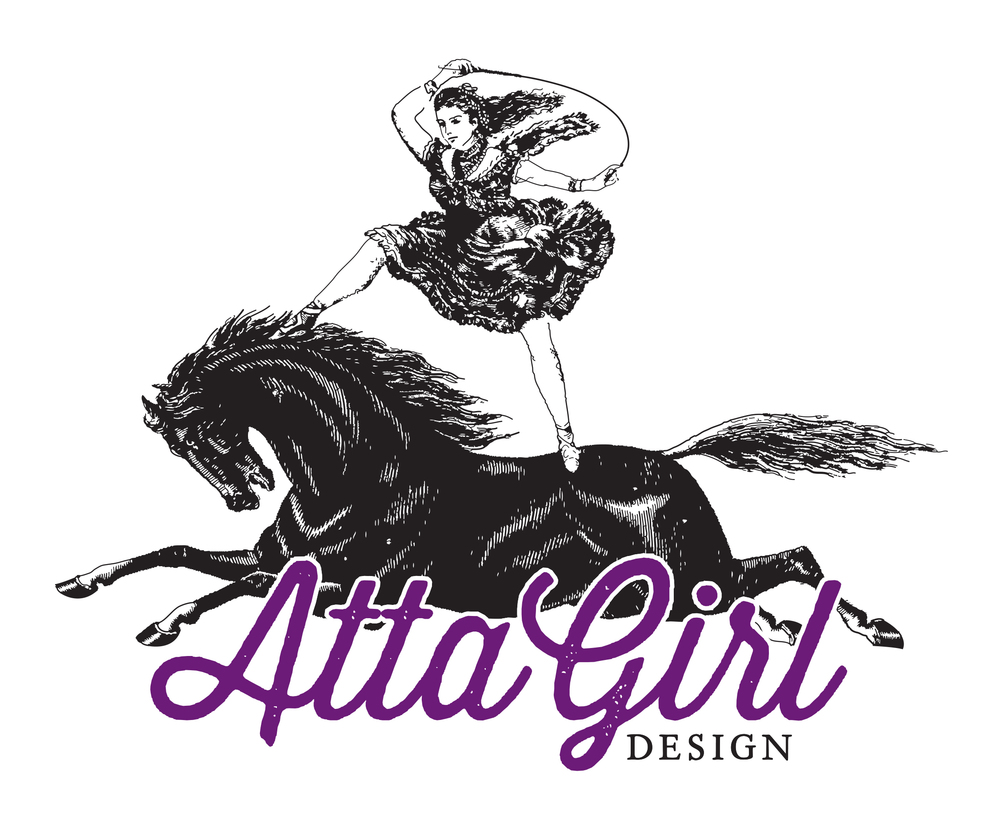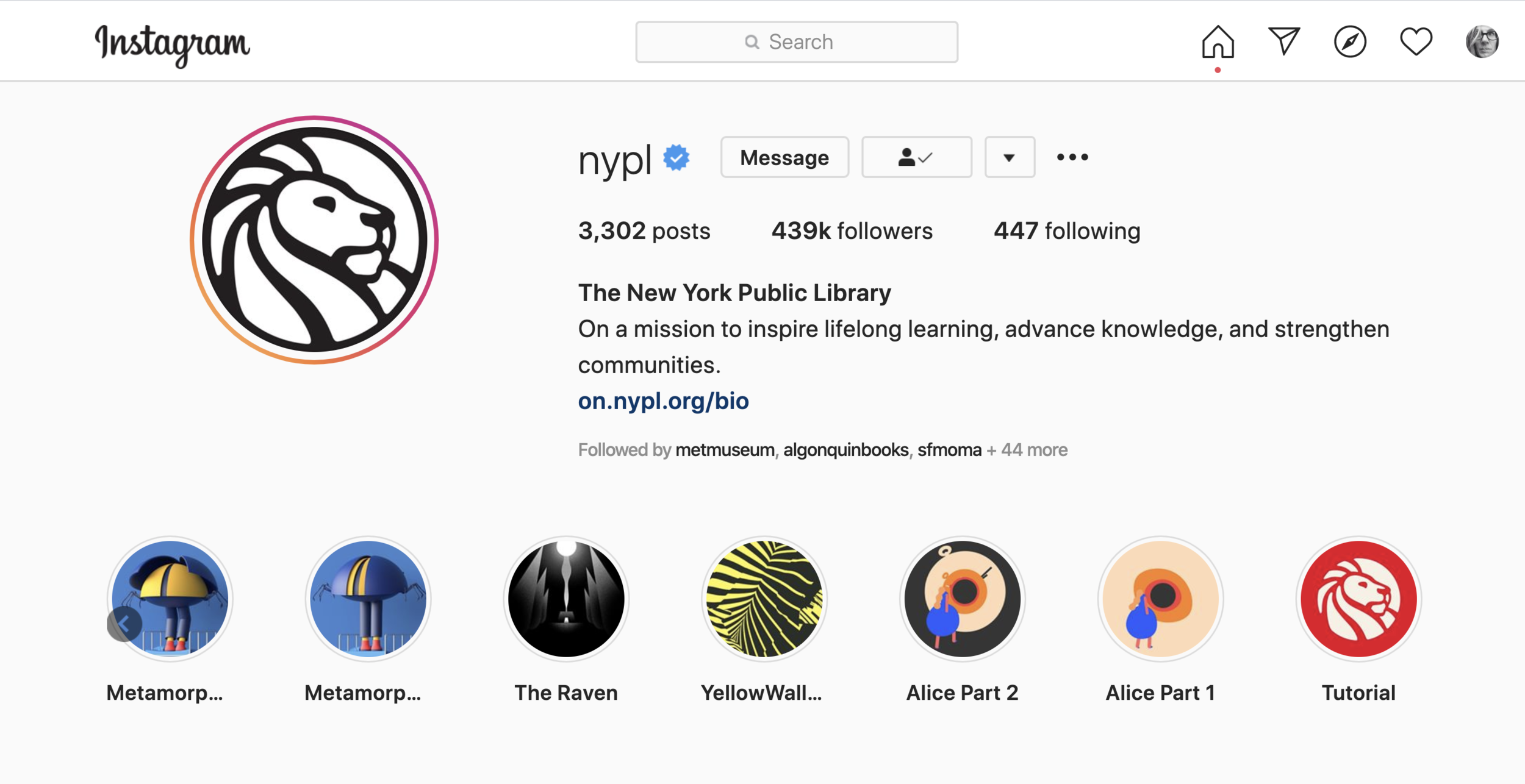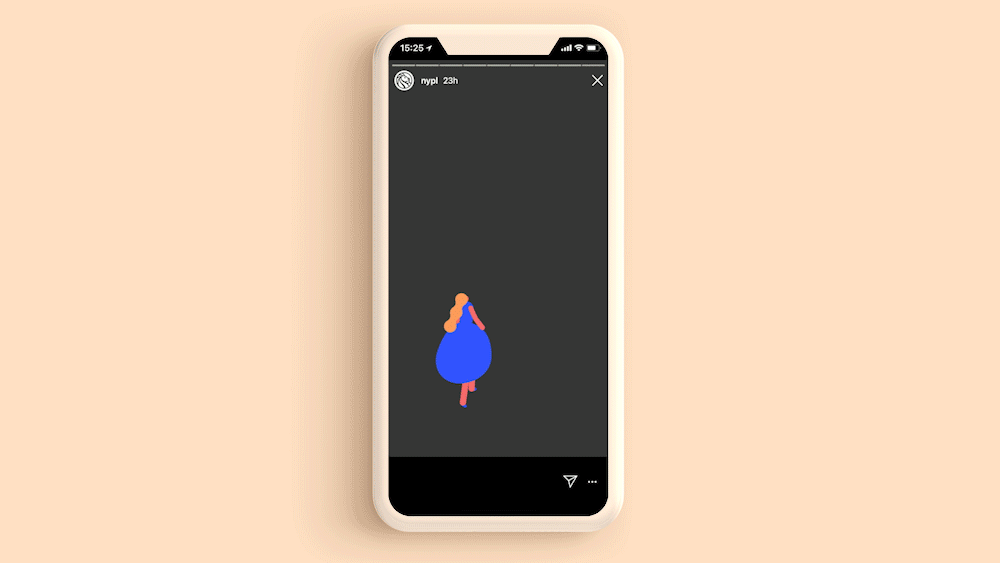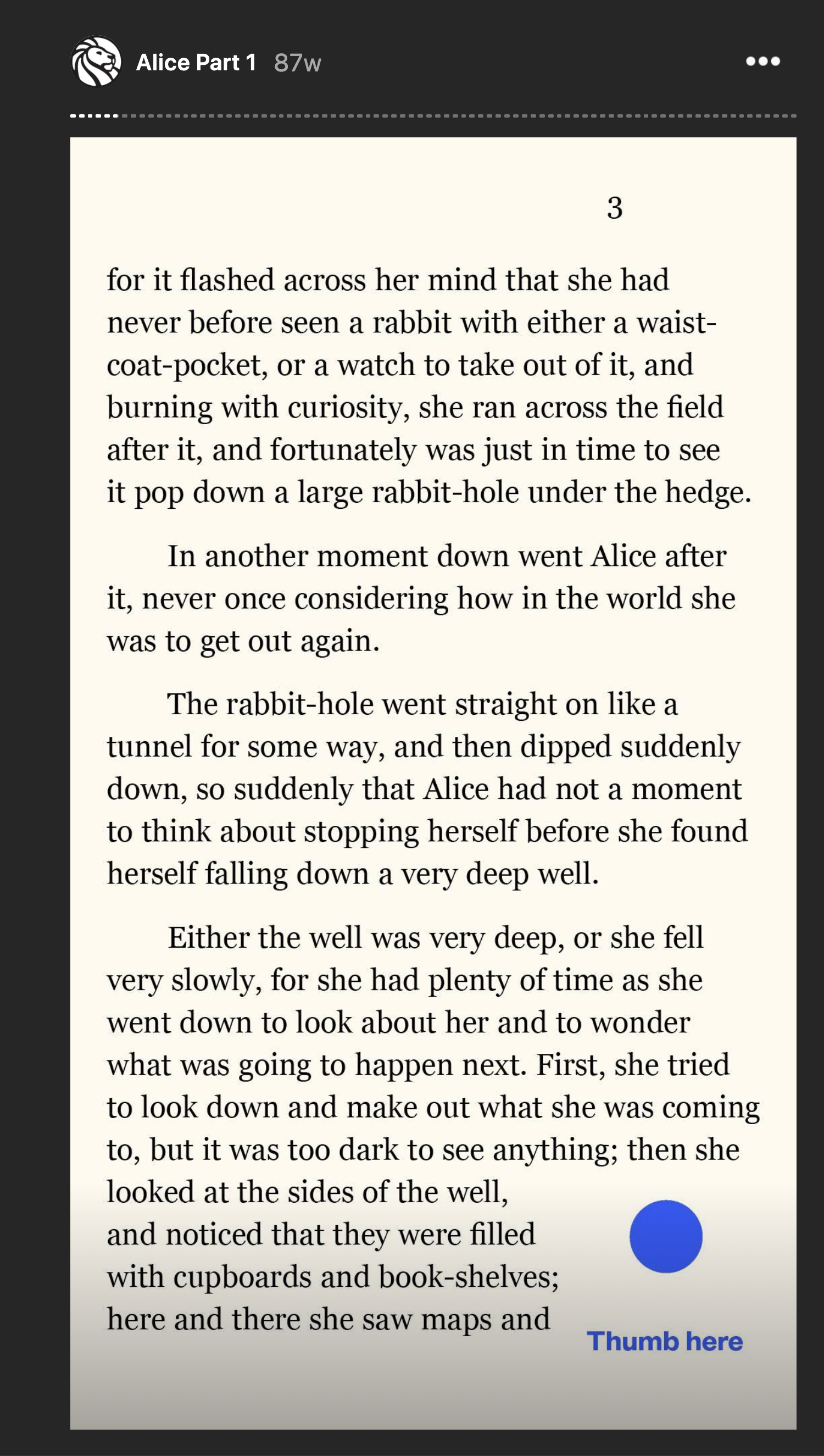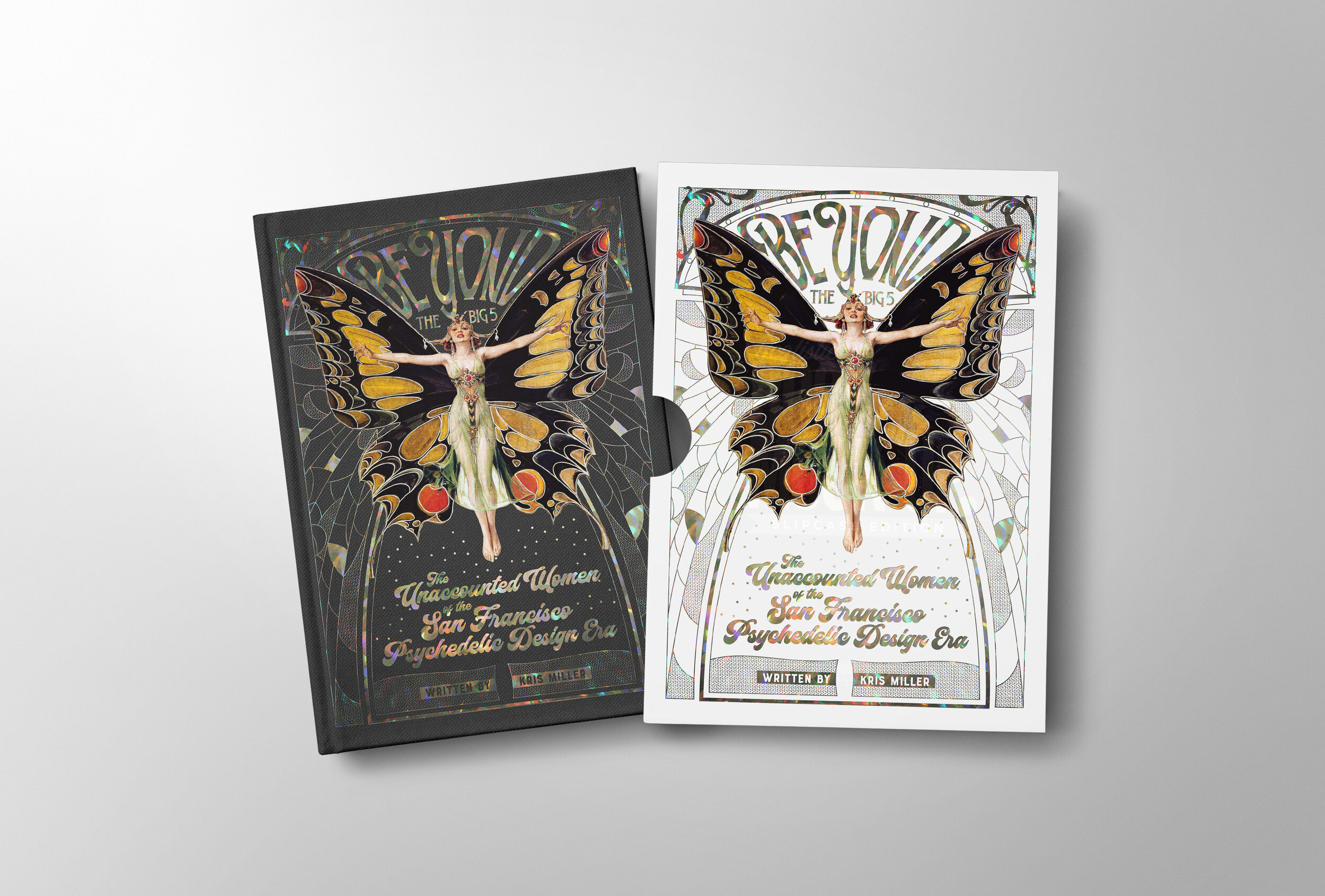PRODUCTION AND PROMOTION
This book's target demographic are designers, rock and roll enthusiasts and supporters of women's rights to equality. The production of the book would be in an initial short run of 500 books working with Bay Area print and bindery specialists such as the San Francisco Center for the Book, The Key Printing and Binding, and The Aesthetic Union Letterpress.
The book set would include a hot foil stamped exterior slipcase with thumb-cut openings with holographic foil and a hot purple painted edge. The book itself would be a charcoal grey cloth again with a holographic foil hot stamped front and back covers. The interior of the book would be produced with a split fountain interior bookplate with another holographic foil hot stamp. The interior pages would be printed on a 100lb text weight bright white smooth opaque paper.
A Kickstarter campaign will be used to help drive promotion and fundraising for the initial print run. Additional promotions via the local record stores such as Amoeba Records in the Haight to sell alongside their vintage poster collections. Social media and a microsite for the book would also be utilized for the promotion of the book. A limited edition poster could be a value-add for early Kickstarter backers.
REFERENCE:
Lewis, A., (2016) So You Want to Publish a Magazine. London: Laurence King
Chapter 01. So you want to publish a magazine?
Chapter 02. Choose your own adventure
Chapter 05. Ink and Pixels
Ambrose, G., (2015) The Layout Book. London: Bloomsbury
Falmouth University (2018). Visual Writing: Design & Critique| Lecture. History and Futures GDE720 19/20 Part-Time Study Block S2 (Falmouth, UK: Falmouth University)
A conversation with Bucks County's Bonnie MacLean, Fillmore poster artist past and present. (2015, September 28). Retrieved from https://thekey.xpn.org/2015/09/28/bonnie-maclean-fillmore-poster/
Ankeny, J. (n.d.). Stanley Mouse: Biography & History. Retrieved from https://www.allmusic.com/artist/mouse-mn0001838603
Biography by Norman Hathaway September 17. (n.d.). 2018 AIGA Medalist Victor Moscoso. Retrieved from https://www.aiga.org/medalist-victor-moscoso
Bonnie MacLean. (n.d.). Retrieved from https://www.bahrgallery.com/artist-master/bonnie-maclean
Darrow, C. (2015, August 18). Soon-to-open Fillmore Philadelphia connects with the past through local poster artist Bonnie MacLean. Retrieved from https://www.inquirer.com/philly/entertainment/music/20150818_Soon-to-open_Fillmore_Philadelphia_connects_with_the_past_through_local_poster_artist_Bonnie_MacLean.html
Genzlinger, N. (2020, February 20). Bonnie MacLean, Psychedelic Poster Artist, Is Dead at 80. Retrieved from https://www.nytimes.com/2020/02/20/arts/bonnie-maclean-dead.html
Gleaves, J. (2015, July 7). California Dreamin'. Retrieved from https://www.theparisreview.org/blog/2015/07/07/california-dreamin/
Grafik. (n.d.). Victor Moscoso. Retrieved from https://www.grafik.net/category/archive/victor-moscoso
Hotchkiss, S. (2018, August 15). At 90, Barbara Stauffacher Solomon Has No Time for the Art World (and Never Did). Retrieved from https://www.kqed.org/arts/13839094/barbara-stauffacher-solomon-bampfa-art-wall
Ink and acid: The psychedelic design revolution. (n.d.). Retrieved from https://www.iconeye.com/design/features/item/12567-ink-and-acid-the-psychedelic-design-revolution
Jones, A. (2020, February 13). Legendary Rock Poster Artist Bonnie MacLean Dead at 80. Retrieved from https://www.pastemagazine.com/music/bonnie-maclean/poster-artist-bonnie-maclean-dead/
Legaspi, A. (2020, January 31). Wes Wilson, Iconic Psychedelic Poster Artist, Dead at 82. Retrieved from http://www.rollingstone.com/music/music-news/wes-wilson-psychedelic-poster-artist-dead-obituary-945946/
Marget Larsen. (n.d.). Retrieved from https://designobserver.com/feature/marget-larsen/39501
Marget Larsen. (n.d.). Retrieved from https://communityofcreatives.com/marget-larsen/
Marget Larsen · SFMOMA. (n.d.). Retrieved from https://www.sfmoma.org/artist/Marget_Larsen/
Morley, M. (2019, April 5). The Cost of Free Love and the Designers Who Bore It-Meet the Women of Psychedelic Design. Retrieved from https://eyeondesign.aiga.org/women-of-psychedelic-design/
Nick, & Nick. (n.d.). Rick Griffin. Retrieved from https://trps.org/artists/rick-griffin/
OZ magazine, London: Historical & Cultural Collections: University of Wollongong. (n.d.). Retrieved from https://ro.uow.edu.au/ozlondon/
Peace, Love and Posters. (n.d.). Retrieved from https://www.brooklynmuseum.org/community/blogosphere/2009/11/18/peace-love-and-posters/
Perry, C. (n.d.). Mari Tepper • The Rock Poster Society. Retrieved from https://trps.org/artists/mari-tepper/
Petty, F., Petty, F., Jansen, C., Jansen, C., Awwad, Y., & Awwad, Y. (n.d.). A multi-hyphenate pioneer: Barbara Stauffacher Solomon. Retrieved from https://www.foldmagazine.com/multi-hyphenate-pioneer-barbara-stauffacher-solomon
Petty, F., Jansen, C., & Awwad, Y. (n.d.). A multi-hyphenate pioneer: Barbara Stauffacher Solomon. Retrieved from https://www.foldmagazine.com/multi-hyphenate-pioneer-barbara-stauffacher-solomon
Pioneer: Marget Larsen. (2010, October 27). Retrieved from https://www.commarts.com/features/pioneer-marget-larsen
Popeson, P., & Department Preparator. (n.d.). MoMA: Consider the Rock Concert Poster. Retrieved from https://www.moma.org/explore/inside_out/2014/12/18/rock-concert-posters-at-moma/
Rick Griffin. (n.d.). Retrieved from https://www.bahrgallery.com/artist-master/rick-griffin
Rick Griffin. (n.d.). Retrieved from https://clubofthewaves.com/feature/rick-griffin/
San Francisco Rock Posters and the Art of Photo-Offset Lithography. (2010). The Book and Paper Group Annual, Vol 29.
Sinclair, M. (2017, June 9). The Big Bold World of Barbara Stauffacher Solomon. Retrieved from https://www.creativereview.co.uk/barbara-stauffacher-solomon/?nocache=true&adfesuccess=1
Staff, C. (n.d.). Visions Not Previously Seen: The Groundbreaking Design Work of Barbara Stauffacher Solomon. Retrieved from https://create.adobe.com/2018/3/28/visions_not_previous.html
Stanley Mouse. (n.d.). Retrieved from http://www.artnet.com/artists/stanley-mouse/
Stanley Mouse • The Rock Poster Society. (n.d.). Retrieved from https://trps.org/artists/stanley-mouse/
T Suggests: Sumptuous Scrunchies, Radiant Paintings by an Outsider Artist and More. (2019, February 22). Retrieved from https://www.nytimes.com/2019/02/22/t-magazine/barbara-stauffacher-solomon-sophie-buhai-hair-editors-picks.html
The Book and Paper Group Annual--Volume 29--Contents. (n.d.). Retrieved from https://cool.culturalheritage.org/coolaic/sg/bpg/annual/v29
The Summer of Love Experience: Art, Fashion, and Rock & Roll: famsf-digital-stories. (n.d.). Retrieved from https://digitalstories.famsf.org/summer-of-love/
TypeRoom. (n.d.). Supergraphics' Barbara Stauffacher Solomon legacy is ready to be told. Retrieved from https://www.typeroom.eu/article/supergraphics-barbara-stauffacher-solomon-legacy-ready-be-told
Victor Moscoso Biography and Top Artwork List: It's Primo Guide. (2019, May 27). Retrieved from https://itsprimo.com/featured/victor-moscoso-posters/
Weller, S. (n.d.). LSD, Ecstasy, and a Blast of Utopianism: How 1967's "Summer of Love" All Began. Retrieved from https://www.vanityfair.com/culture/2012/07/lsd-drugs-summer-of-love-sixties
Wes Wilson. (n.d.). Retrieved from https://www.bahrgallery.com/artist-master/wes-wilson
When Art Rocked: San Francisco Music Posters. (n.d.). Retrieved from https://www.sfomuseum.org/exhibitions/when-art-rocked-san-francisco-music-posters
